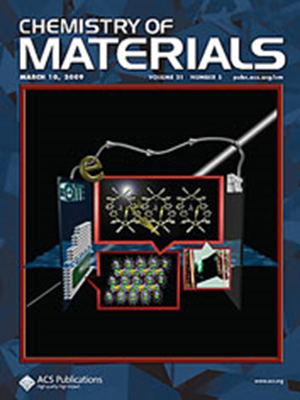Ion Migration and Dopant Effects in the Gamma-CsPbI3 Perovskite Photovoltaic Material: Atomistic Insights through Ab Initio and Machine Learning Methods
IF 7.2
2区 材料科学
Q2 CHEMISTRY, PHYSICAL
引用次数: 0
Abstract
Inorganic halide perovskites such as CsPbI3 are attracting increasing attention for solar cell and optoelectronic applications. Ion migration is known to be an important factor in perovskite behavior, but the impact of cation dopants on iodide diffusion in the room-temperature orthorhombic γ-CsPbI3 is not fully understood, especially at the atomic level. Here, we investigate the effect on iodide migration of incorporating different cations (including Sn2+, Ba2+, and Cu2+) into γ-CsPbI3, focusing on maintaining an inorganic phase rather than doping with molecular organic ions. Through a combination of ab initio and machine learning (ML) techniques, our results show that the simulated structure, band gap, and ion migration energies are in good agreement with experimental data. We find that partial Pb-site substitution does not have a major suppressing effect on iodide ion transport, which is important for guiding future doping work. An ML interatomic potential model was derived for large-scale simulations (∼80 ns) of the pristine and Sn-doped materials, which reveal iodide diffusion paths along the Pb–I octahedral edges with no correlated cation motion. Structural analysis indicates an ordered cation sublattice but disorder in the anion sublattice, indicative of high iodide ion mobility similar to fast-ion conductors.

γ - cspbi3钙钛矿光伏材料中的离子迁移和掺杂效应:通过从头算和机器学习方法的原子性见解
CsPbI3等无机卤化物钙钛矿在太阳能电池和光电子领域的应用越来越受到人们的关注。离子迁移是钙钛矿行为的一个重要因素,但阳离子掺杂剂对碘化物在室温正交γ-CsPbI3中的扩散的影响尚未完全了解,特别是在原子水平上。在此,我们研究了在γ-CsPbI3中加入不同阳离子(包括Sn2+, Ba2+和Cu2+)对碘化物迁移的影响,重点是维持无机相而不是掺杂分子有机离子。通过从头算和机器学习(ML)技术的结合,我们的研究结果表明,模拟的结构、带隙和离子迁移能与实验数据吻合良好。我们发现部分pb位点取代对碘离子输运没有明显的抑制作用,这对指导未来的掺杂工作具有重要意义。对原始材料和掺锡材料进行了大尺度模拟(~ 80 ns),导出了ML原子间电位模型,揭示了碘化物沿Pb-I八面体边缘的扩散路径,没有相关的阳离子运动。结构分析表明,阳离子亚晶格有序,阴离子亚晶格无序,表明碘离子迁移率高,类似于快离子导体。
本文章由计算机程序翻译,如有差异,请以英文原文为准。
求助全文
约1分钟内获得全文
求助全文
来源期刊

Chemistry of Materials
工程技术-材料科学:综合
CiteScore
14.10
自引率
5.80%
发文量
929
审稿时长
1.5 months
期刊介绍:
The journal Chemistry of Materials focuses on publishing original research at the intersection of materials science and chemistry. The studies published in the journal involve chemistry as a prominent component and explore topics such as the design, synthesis, characterization, processing, understanding, and application of functional or potentially functional materials. The journal covers various areas of interest, including inorganic and organic solid-state chemistry, nanomaterials, biomaterials, thin films and polymers, and composite/hybrid materials. The journal particularly seeks papers that highlight the creation or development of innovative materials with novel optical, electrical, magnetic, catalytic, or mechanical properties. It is essential that manuscripts on these topics have a primary focus on the chemistry of materials and represent a significant advancement compared to prior research. Before external reviews are sought, submitted manuscripts undergo a review process by a minimum of two editors to ensure their appropriateness for the journal and the presence of sufficient evidence of a significant advance that will be of broad interest to the materials chemistry community.
 求助内容:
求助内容: 应助结果提醒方式:
应助结果提醒方式:


